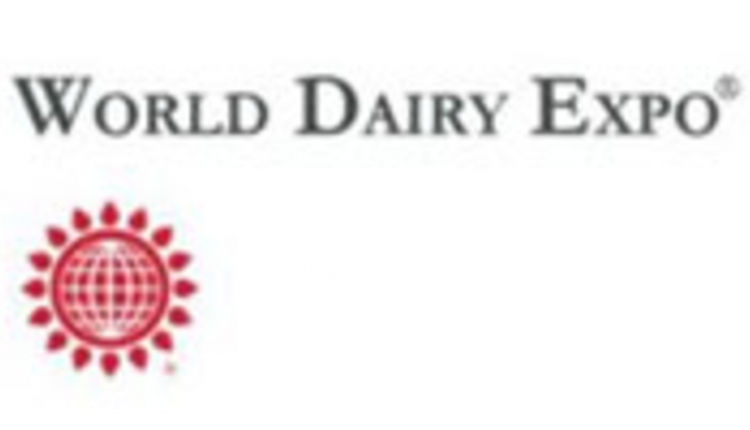The information below has been supplied by dairy marketers and other industry organizations. It has not been edited, verified or endorsed by Hoard’s Dairyman.

Synchronization programs and fertility products have important roles in the reproductive success of dairy farms. Yet, the performance differences between a few crucial products are not so well known. With reproduction as a cornerstone to a successful dairy operation, there is never a wrong time to reevaluate the fertility products on your farm and ensure they are working hard for your reproductive program.
“There are three naturally occurring hormones in the cow that control heat and ovulation,” shared Jennifer Roberts, DVM, Boehringer Ingelheim. “The commercial formulations of each allow us to manage heat synchronization and ovulation in our cows.”
- Prostaglandin (PGF) is the hormone that controls when a cow comes into heat, ovulates or starts a new cycle. It is responsible for decreasing the cow’s level of progesterone, and removes the influence that progesterone has on the ovary. If PGF is administered at the right time within a cow’s cycle, producers can effectively short-cycle that cow. Short cycle is a term used to indicate when a cow is prompted to come into heat sooner than she would in her normal 21-day estrous cycle.
- Gonadotropin-Releasing Hormone (GnRH) is responsible for initiating a surge of luteinizing hormone (LH), which is required for ovulation to occur. Once a cow has been given GnRH, the dominant follicle will ovulate, or the formation of luteal tissue will regress once PGF is administered.
- Progesterone (P) is the hormone that prevents both heat and ovulation. P stays at a high level when a cow becomes pregnant and is responsible for maintaining the pregnancy.
“One of the challenges we have with our lactating dairy cows today is that they continue to produce more and more milk,” said Dr. Roberts. “As the level of production increases, we also see an increase in the metabolism of their naturally occurring hormones, causing high-production cows to not display heat very well or for very long.”
Commercial formulations of PGF and GnRH provide producers with the opportunity to work around the challenges of low-heat expression in high-production cows. There are two formulations on the market for both PGF and GnRH.
Dr. Roberts provides an in-depth look into the results each product has been shown to provide:
PGF
“The two types of prostaglandins on the market are dinoprost tromethamine and cloprostenol sodium,” she explained. ”The main difference between the two products is their half-life.” Cloprostenol has about a three-hour half-life in the cow after it has been administered, whereas dinoprost has a half-life of about eight minutes.1 First-lactation cows treated with cloprostenol are more likely to be detected in estrus, and have a greater conception rate compared to cows treated with dinoprost.2
GnRH
There is also a difference within the two GnRH products, gonadorelin diacetate and gonadorelin hydrochloride, and the results they provide. “There is a very well- documented difference in ovulation rates between cows treated with diacetate or hydrochloride GnRH products, with diacetate outperforming hydrochloride,” stressed Dr. Roberts. In a study, a higher percentage of cows ovulated after an injection of gonadorelin diacetate.3
Outside of choosing an effective hormone, there are other factors to making a synchronization program successful. Management-focused components such as sound body condition, low stress levels and a comfortable environment are all factors that keep cows reproductively healthy and efficient. An attempt to synchronize or short-cycle a cow that is not naturally cycling will be unsuccessful.
Veterinarians are a great resource for all aspects of reproduction, providing advice for managing the herd as a whole, or providing specialized advice regarding a cow’s health, body condition, fertility, pregnancy and more. Reach out to your herd veterinarian to learn more about commercial hormone options and how they can work hard for your synchronization program, so you don’t have to.
References:
1 Martins JPN, Policelli RK, Neuder LM, et al. Effects of cloprostenol sodium at final prostaglandin F2α of Ovsynch on complete luteolysis and pregnancy per artificial insemination in lactating dairy cows. J Dairy Sci 2011 ;94(6):2815–2824.
2 Purlsey JR. Prostaglandin F2α products: Are there differences? Prog Dairy 2012. https://www.agproud.com/articles/19326-prostaglandin-f2-products-are-there-differences. Accessed March 31, 2023.
3 Luchterhand M, Gamarra CA, Gennari RS, et al. Ovulation and fertility response to commercially available GnRH products in lactating cows synchronized with the Double-Ovsynch protocol, Anim Repro Sci 2019;42–48.



